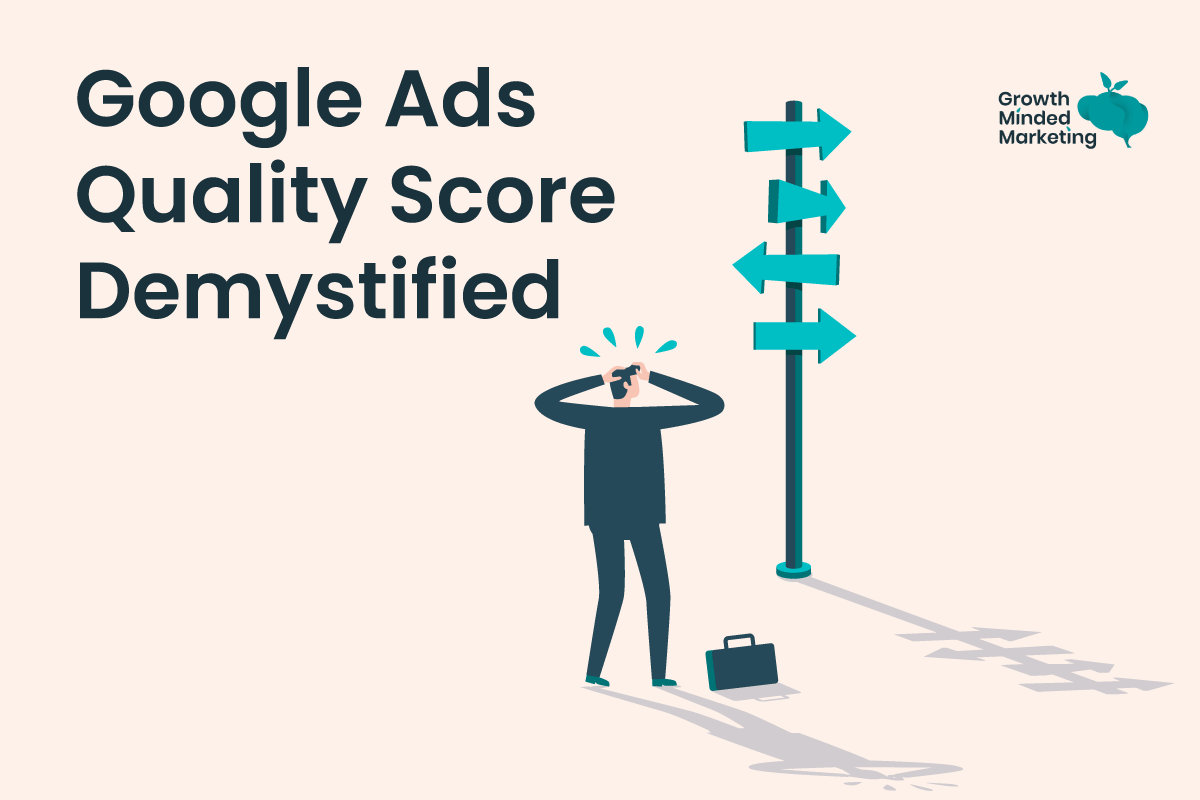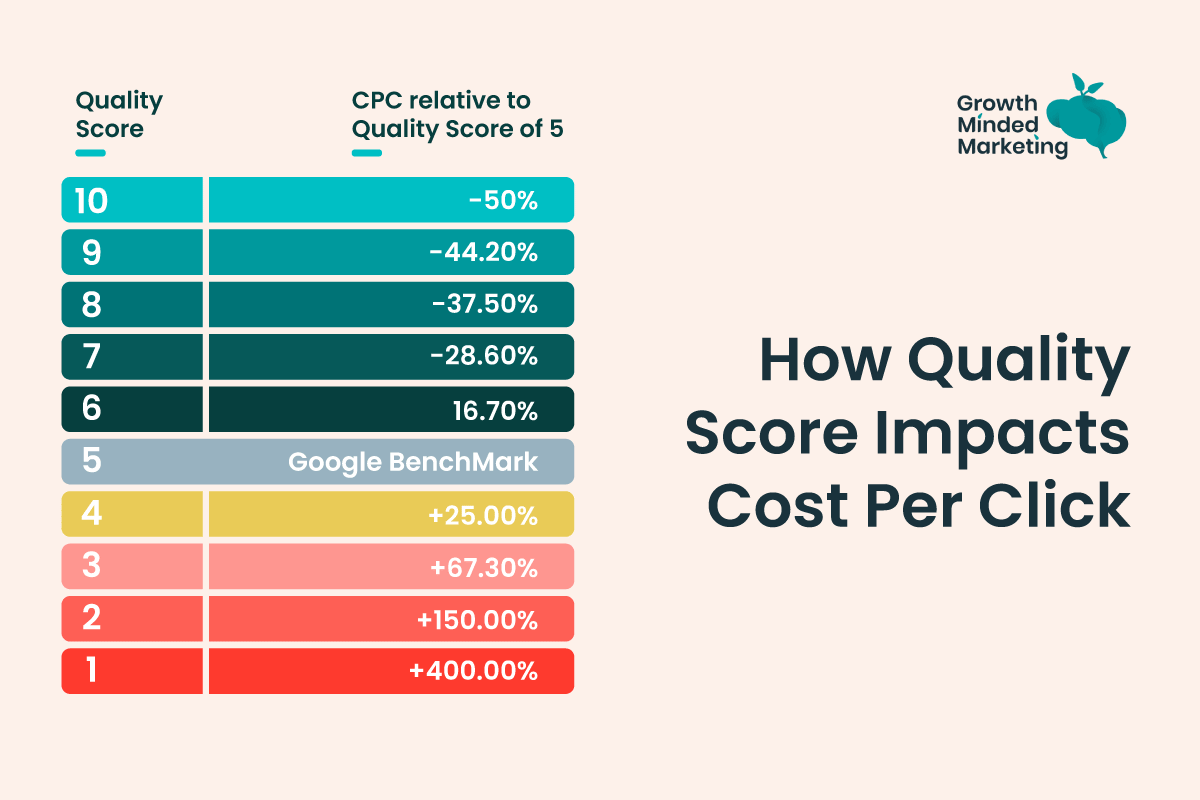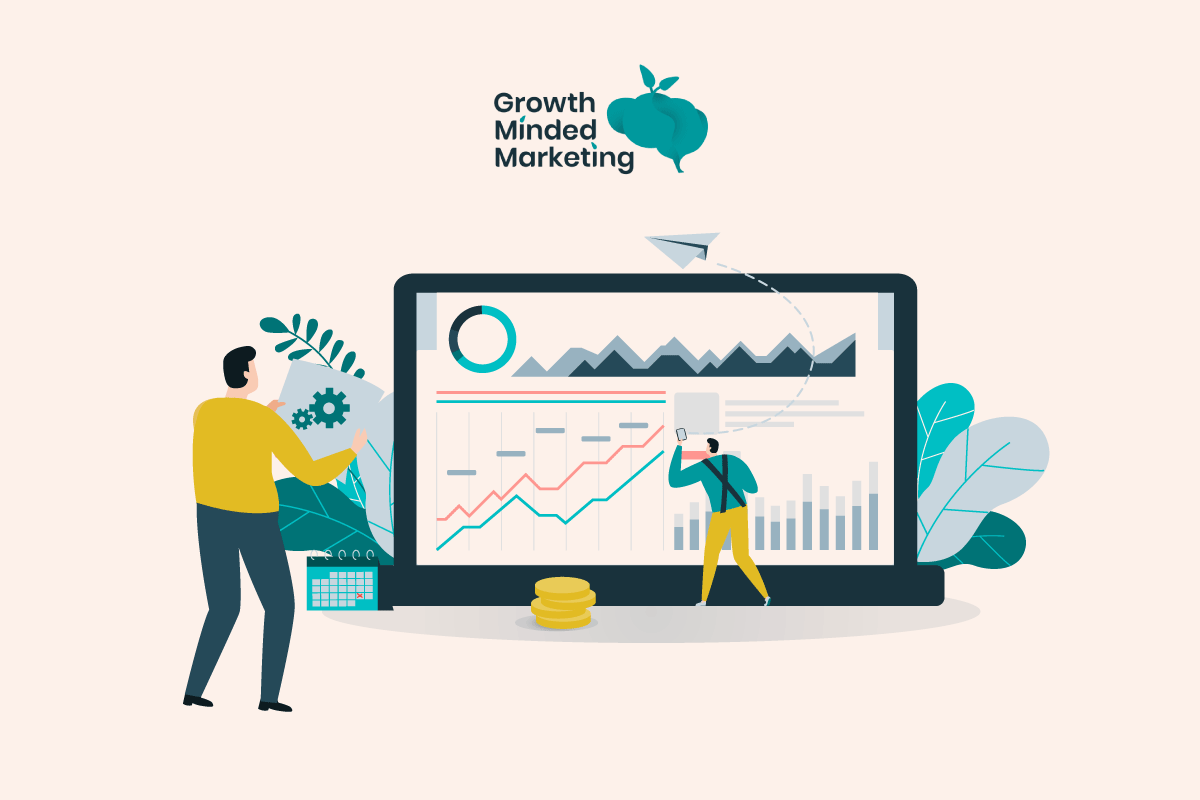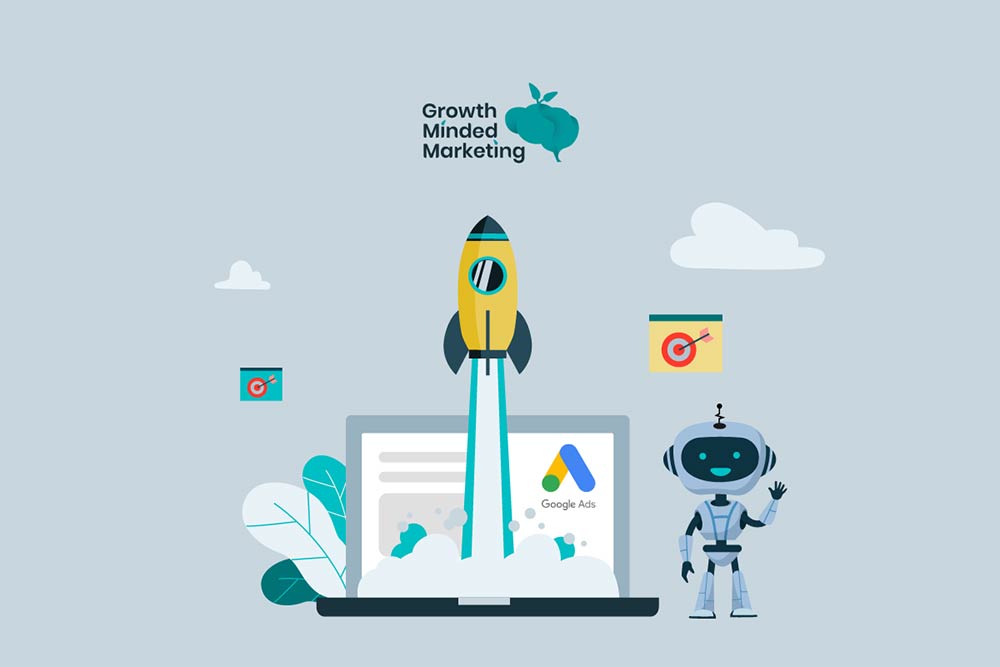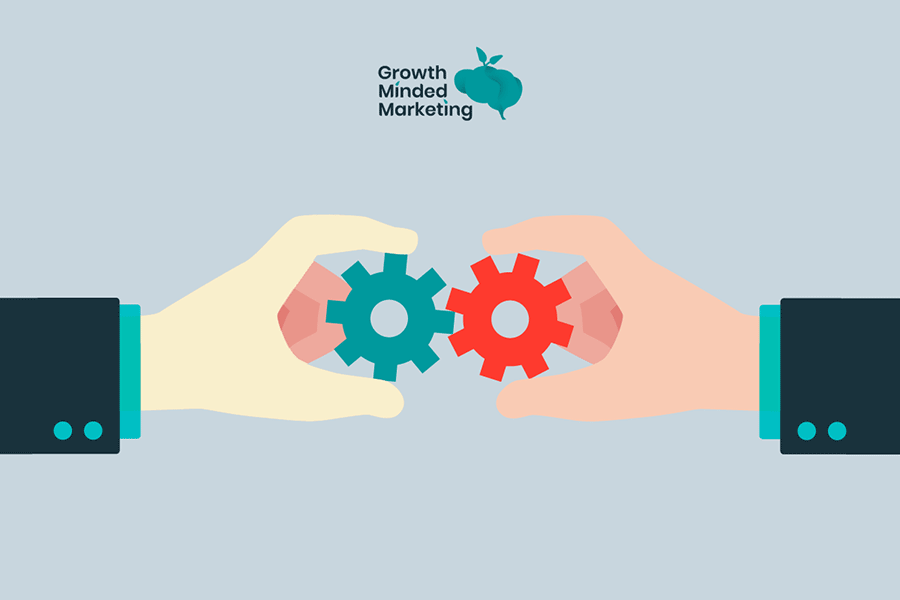A successful, long term Google Ads Search campaign can be greatly improved with higher Quality Scores.
This metric is not just a reflection of your ad’s relevance or the quality of your landing page. It’s a fundamental determinant of your ad’s visibility and cost-efficiency.
Understanding and optimising your Quality Score can significantly enhance your ad’s performance, which can lead to better ad placement and lower CPC costs.
Many PPC managers overlook this metric, focusing solely on bid amounts or keyword selection.
Our article aims to demystify Google Ads Quality Score. We’ve offer insights into its importance, components, and how it can be improved.
Let’s jump in!
Table of Contents
ToggleUnderstanding Google Ads Quality Score
The concept of Quality Score might seem bit complex at first. But it’s fundamental to the mechanics of how ads are served and priced within the Google Ads ecosystem.
Ultimately, Quality Score is a diagnostic tool used by Google to rate the quality and relevance of your keywords and ads.
It’s scaled from 1 to 10, with 10 being the highest.
Quality Score is affected by three primary components.
They are:
- Ad Relevance
- Expected Click-Through Rate (CTR)
- Landing Page Experience
Ad Relevance
Ad relevance measures how closely your ad matches the intent behind a user’s search query.
Google assesses whether your ad and keywords are relevant to what users are searching for. This ensures that the ads displayed are relevant and beneficial to the searcher’s needs.
Expected Click-Through Rate (CTR)
Expected Click-Through Rate is an estimation of the likelihood that your ad will be clicked when shown.
This metric is based on the historical performance of your ad, considering how well your keyword has matched search queries in the past.
A higher expected CTR indicates that your ad is likely appealing and relevant to users.
Landing Page Experience
Landing Page Experience evaluates the usability and relevance of your landing page.
Google evaluates how well your landing page serves users who click on your ad.
It considers factors like content relevance, ease of navigation, and page load speed. A positive landing page experience is crucial for your Quality Score.
It’s also crucial for converting visitors into customers / leads.
It plays a critical role in determining your Ad Rank, the position your ad occupies in search results.
Ad Rank also considers your bid amount, but a higher Quality Score can allow your ad to achieve a better position at a lower cost.
This is because Google rewards ads that provide a high-quality experience for users. This aligns with Google’s goal of delivering the most relevant search results. (and ultimately make them more money)
Improving your Quality Score can lead to significant benefits, increased ad visibility and lower CPCs (cost per click).
A high Quality Score signifies that your keywords meets the needs of your target audience.
This highlights the importance of focusing on Quality Score in your Google Ads strategy – It combines relevance, user satisfaction, and cost efficiency.
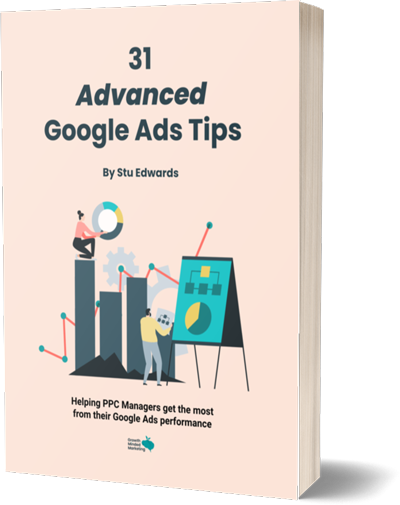
Learn advanced tips that PPC professionals use to dramatically increase their Google Ads performance!
The Importance of Google Ads Quality Score
Quality Score is more than just a number metric within the Google Ads.
It’s an important indicator of your ad’s health and efficiency. But why does Quality Score matter so much?
Before we go further, we should caveat with this:
Quality Score isn’t something to obsess over.
If you have a keyword that’s getting great results and hitting your KPIs with a QS of 3, then why worry?
…Because you have a lot of room to improve…
A better Quality Score can mean:
Reduced Costs and Improved ROI
One of the most compelling benefits of a high Quality Score is the potential for reduced cost-per-click (CPC).
A higher Quality Score can lead to significant savings and a better ROI for your campaigns in the long term.
Essentially, you’re paying less for more clicks. Win-win!
Better Ad Positions and Visibility
A high Quality Score also contributes to improved ad positions, even if they have lower keyword bids than their competitors.
Better positioning and visibility increases the likelihood of clicks and conversions.
Enhanced User Experience
At its core, Quality Score is a reflection of your ad’s relevance to users’ search queries and their experience on your landing page.
When optimising for Quality Score, you’re inherently improving the user experience.
Competitive Advantage
In the competitive landscape of Google Ads, a higher Quality Score can be a decisive factor in standing out among competitors.
It enables your ads to appear in prime positions without the need to outbid competitors significantly.
This advantage means that with the right optimisation strategies, smaller businesses can compete with much larger ones. They gain visibility and attract traffic that might otherwise go to more established brands.
How to Improve Your Google Ads Quality Score
Improving your Google Ads Quality Score is crucial. It enhances the performance and cost-effectiveness of your campaigns.
You can adopt a targeted approach to optimisation by focusing on the three main components of Quality Score.
Here are practical strategies for each component of Quality Score:
1. Enhancing Ad Relevance
- Keyword Grouping: Create tightly themed ad groups with keywords that are closely related. This ensures that your ads are highly relevant to the user’s search query. The closer your ad content matches the user’s intent, the higher your ad relevance will be
- Refined Ad Copy: Tailor your ad copy to closely match your target keywords. Use the keywords in your ad headline and description to signal to Google and users that your ad is directly relevant to their search. Try and personalise your messaging to speak directly to the user’s needs and interests
2. Increasing Expected CTR
- Compelling Ad Creative: Design your ads to stand out with clear, compelling calls to action that encourage users to click. Highlight unique selling points or special offers that differentiate you from competitors
- Use of Extensions / Assets: Ad Assets can significantly improve your ad’s visibility and CTR. They provide additional information and links, like site links, callouts, and structured snippets. They make your ad more prominent on the search results page and offer more ways for users to interact with your ad.
3. Optimising Landing Page Experience
- Relevance and Content Quality: Ensure your landing page closely aligns with your ad’s promise, or offer. The content should be directly relevant to the ad’s message and provide value to the visitor. High-quality, useful content encourages longer page visits and higher engagement
- Page Load Speed: A fast-loading page is crucial for a good user experience. Use tools like Google’s PageSpeed Insights to identify and fix issues that may be slowing down your landing page
- User-Friendly Design: Design your landing page with a clear, intuitive layout. Navigation should be straightforward. There should be a clear path to the desired action (eg making a purchase, submitting a lead form). Mobile optimisation is also crucial
- Continuous Optimisation: Improving Quality Score is an ongoing process. Regularly review your ads’ performance. Test different approaches to ad copy, keywords, and landing page design. Use A/B testing to compare different versions and adopt the strategies that deliver the best results.
Improving your Quality Score can seem daunting. By addressing each component, you can significantly enhance the efficiency and effectiveness of your Google Ads campaigns.
Conclusion
Understanding and aiming to improve Quality Score is essential.
As we’ve explored, a high Quality Score is more than just a badge of honour. It’s a crucial lever for improving ad visibility.
Each element we’ve mentioned plays a pivotal role in not only boosting your Quality Score, but also in delivering a better user experience.
At the heart of Quality Score, Google is trying to ensure that users are presented with ads that are relevant, informative, and engaging.
They don’t want users to have a bad experience on their platform – and you will be punished with a low QS and high CPCs…
If you have any questions about how to improve your Quality Score, or anything else related to Google Ads, then please book a free strategy session! We’re super friendly and ready to help.

Find out how our Google Ads management services can help your business grow.

